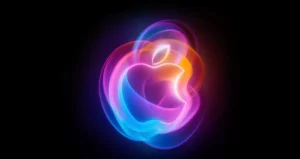
AI Paints a New Picture for the Future of Art and Design
The explosion of Generative AI onto the scene has had a dramatic impact on art and design. AI is increasingly influencing the fields of art and design, enabling new forms of creativity, enhancing traditional processes, and opening up new possibilities, as well as challenges, for artists and designers.
One of the most significant ways AI is affecting art and design is through art generation and augmentation. Not only for casual artists, but especially for professional ones, AI has rapidly displaced the use of stock imagery and the employment of designers for many transactional design activities, such as advertising, social media image creation, and web design. However, even skilled artists and designers are discovering ways to utilize AI as an augmented assistant to explore new aesthetic possibilities, blending styles and creating novel visuals.
AI assists artists and designers by automating repetitive tasks, suggesting different design elements, and providing creative inputs. This technology enables style transfer, where the style of one image is applied to another, allowing artists to create works that blend different artistic influences. These AI systems help speed up the design process, making it more efficient and accessible, as well as cost-effective.
Moreover, AI tools are now being used to generate audio content, including music composition and soundscaping for various artistic and transactional purposes. AI analyzes existing music and generates original compositions, providing artists with new tools for exploration and experimentation in music production. These innovative tools allow individuals who might not have received professional training to create art or music.
Furthermore, AI is facilitating the design process and output by automating tedious tasks and processes that are part of transactional design activities. AI enhances image editing and video editing by automatically performing complex tasks like color correction, object removal, and content-aware resizing. Video enhancement software allows artists and designers to focus on creativity rather than technical execution.
Additionally, audio tools help remove filler words or cuss words, tighten audio gaps, perform audio leveling, generate transcripts, and optimize the entire process of producing high-quality output. AI systems also aid in curating and repurposing content. These tools can analyze different kinds of artwork, identifying themes, styles, or trends that may not be apparent to human creators.
AI-powered software can then take the same generated output and repurpose it in various forms for diverse media platforms. As AI becomes more prominent, artists and designers are seeing the potential for collaboration with these systems as a way to realize their creative instincts and talents further.
Some of the most exciting developments involve using AI as an interactive tool that creates personalized experiences. For instance, AI can generate music or visual art in real-time based on user input or environmental data, creating a unique experience for each viewer. This technology is being used in interactive exhibits that respond to audience movements and interactions.
However, there are concerns about the potential impact of AI-generated art on human creativity and artistic output. Will AI-generated “slop” increasingly crowd out high-quality, human-generated outputs? Will people lose the desire or skill to create these works without AI assistance? Will people become more enamored with AI hyperpersonalized outputs that they won’t be as interested in less perfect human outputs?
For now, many transactional design and art activities are seeing greater use of AI. How this will impact the creative and non-commercial aspects of design remains uncertain.
Ultimately, it is crucial for artists and designers to recognize AI not only as a tool but also as an ally that can augment their abilities rather than replace them.
Source: https://www.forbes.com/sites/ronschmelzer/2025/04/25/ai-paints-a-new-picture-for-the-future-of-art-and-design/


